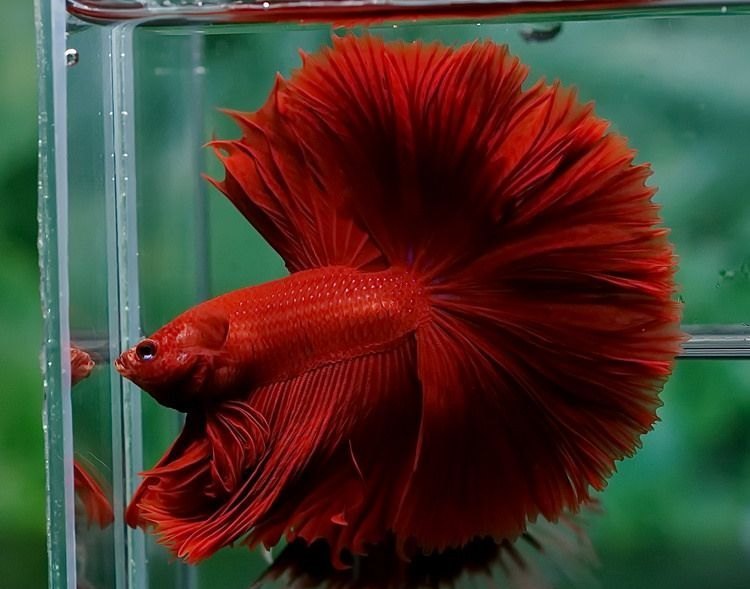Effective Ways to Choose the Best Fish Tank Water Pump in 2025
Choosing the right fish tank water pump is crucial for maintaining a healthy aquatic environment. In 2025, advancements in technology have transformed the options available, and understanding these features can greatly affect your aquarium's water quality and overall health. A fish tank water pump not only circulates water but also aids in filtration and aeration, essential components for aquatic life sustainability. By carefully selecting an appropriate pump, you can ensure optimal water movement, enhance oxygen levels, and promote effective filtration in your aquarium.
This article explores effective ways to choose the best fish tank water pump. We will dive into the various types of pumps, their specific functions, and key aspects to consider for maintaining a thriving aquarium. You'll gain valuable insights into pump energy consumption, noise levels, and installation tips. By the end, you'll be well-equipped to make an informed decision, ensuring your aquatic environment flourishes.
Key takeaways from this guide include understanding the importance of pump flow rates, selecting energy-efficient options, and ensuring compatibility with your fish tank size and setup. Let’s explore these critical aspects further!
Understanding Fish Tank Water Pump Types
Before diving into the selection process, it’s essential to grasp the different types of fish tank water pumps available. In 2025, most fish keepers are presented with two main categories: submersible water pumps and external water pumps. Each type offers distinct advantages that cater to varying aquarium setups.
Submersible Water Pumps
Submersible water pumps are designed to operate underwater, making them quieter and more energy-efficient. They are typically used for aquarium filtration and water circulation. The compact size of submersible pumps allows them to fit easily into tight spaces. When choosing a submersible pump, consider its flow rate and energy consumption.
Among the advantages of submersible pumps are their minimal noise levels, contributing to a tranquil environment. However, it’s crucial to keep them clean to ensure optimal performance and prevent pump failures.
External Water Pumps
In contrast, external water pumps are located outside of the aquarium. They are often more powerful than their submersible counterparts, making them ideal for larger tanks or systems requiring significant water movement. These pumps, while effective, may produce more noise and require more maintenance. Understanding the pump specifications can help determine if an external pump aligns with your requirements.
The type of pump you select will significantly impact your aquarium’s design and functionality. Adequate flow rates should be matched with the tank size to ensure proper water movement and prevent stagnation. This naturally leads us to considering flow rates in your selection process.
Optimizing Pump Flow Rate for Your Aquarium
Flow rate is a critical aspect of choosing a suitable aquarium water pump. The flow rate determines how much water the pump can move in a set timeframe, usually measured in gallons per hour (GPH). Understanding this measurement will help you keep your aquarium properly oxygenated and filtered.
Calculating the Required Flow Rate
To determine the optimal flow rate for your fish tank, consider its size and the type of aquatic life housed within it. A general rule of thumb is that a tank should circulate its total volume at least 3 to 5 times per hour. For instance, if you have a 50-gallon tank, look for a pump that can deliver between 150 and 250 GPH for adequate circulation.
Adjustable Flow Rate Features
An aquarium water pump with an adjustable flow rate feature is advantageous as it allows you to customize water movement based on specific tank needs. This is particularly important for delicate species that may become stressed with strong currents. Make sure to evaluate pump specifications for flexibility in flow adjustments.
Common Mistakes to Avoid
Many aquarium enthusiasts overlook the importance of flow rate. A pump that is too powerful can disturb the fish environment or lead to excessive water agitation, affecting water quality. Conversely, a pump with insufficient flow may result in stagnant zones that compromise filtration efficiency. Pay close attention to your pump reviews and consider user feedback regarding flow performance.
Energy Efficiency and Noise Considerations
In today’s environmentally conscious world, energy efficiency is a significant factor when choosing a fish tank water pump. An energy-efficient water pump not only reduces electricity costs but also minimizes heat generated in the aquarium, contributing to a stable temperature.
Choosing Energy Efficient Pumps
Look for water pumps marked with energy star ratings or those specifically designed to be energy efficient. These models typically use advanced technology to deliver high performance with lower power consumption. The long-term savings associated with efficiency could positively impact your overall aquarium maintenance budget.
Noise Levels in Aquarium Pumps
Another critical aspect is the pump's noise level. Silent water pumps are preferred in many setups, particularly in homes where tranquility is desired. Research has shown that certain designs reduce operational noise by utilizing submerged motors or shock-absorbing mounts. Read user experiences to gauge the likelihood of noise disturbance before making a selection.
Brands and Models of Aquarium Water Pumps
With numerous brands and models of aquarium pumps on the market, it can be overwhelming to identify which ones meet your needs. Researching reputable brands known for reliability can save you time and frustration when maintaining your tank.
Reputable Brands
Manufacturers like AquaClear, Hydor, and Eheim are renowned in the aquarium community for their durable and effective water pumps. Their products often come highly rated in fish tank pump reviews and comparisons. Consider incorporating these brands into your research when looking for the best fish tank pump for your setup.
Identifying Key Features
When analyzing pump options, pay attention to key features such as energy consumption, warranty, and customer support. A warranty period often indicates manufacturer confidence in their product, while quality customer support can help with troubleshooting and maintenance issues.
Aquarium Pump Maintenance Essentials
To ensure your chosen fish tank water pump functions optimally, regular maintenance is necessary. Understanding the basic maintenance schedule for aquarium pump care keeps your aquatic environment healthy.
Routine Maintenance Schedule
Establish a regular cleaning schedule for your aquarium pump, ideally every few weeks or as needed based on the pump's performance. This includes rinsing off dirt or debris and checking for clogs within the intake. Regular maintenance not only prolongs the pump's lifespan but also enhances filtration efficiency.
Troubleshooting Common Issues
Should you experience any problems like unusual noises or reduced water flow, it's essential to troubleshoot these situations promptly. Often, issues can be resolved through simple adjustments or cleanings. Knowing how to clean aquarium pumps effectively should be part of your care routine to prevent breakdowns and maintain water quality.
Conclusion and Key Takeaways
Choosing the right fish tank water pump is pivotal for effective aquarium management in 2025. Understanding the types of pumps available, evaluating flow rates, considering energy efficiency, and committing to regular maintenance can greatly enhance your fish tank environment. By adhering to this guidance, you promote a thriving atmosphere for aquatic life while enjoying the aesthetic beauty of your aquarium.
Your final checklist for purchasing the best fish tank water pump should include factors such as compatibility with your fish tank's size, the level of water movement required, and the pump's energy efficiency features. Embrace these essential strategies for an enriched aquarium experience!


